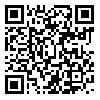

Volume 14, Issue 4 (vol 1 2009)
Intern Med Today 2009, 14(4): 5-12 |
Back to browse issues page
Download citation:
BibTeX | RIS | EndNote | Medlars | ProCite | Reference Manager | RefWorks
Send citation to:



BibTeX | RIS | EndNote | Medlars | ProCite | Reference Manager | RefWorks
Send citation to:
B. Gholamhosseini, A. Khaki, AA. Khaki, H. Kachabi, F. Radsaeed. Ultra structure study of lead acetate cytotoxic effects on heart tissue in rabbit. Intern Med Today 2009; 14 (4) :5-12
URL: http://imtj.gmu.ac.ir/article-1-472-en.html
URL: http://imtj.gmu.ac.ir/article-1-472-en.html
1- , arashkhaki@yahoo.com
Abstract: (12196 Views)
Background and Aim: Lead is one of the world wide using metals that has been used since ancient time. It is also a toxin, known to have adverse effects on the body even at low level of exposure and it induces a bread range of physiological, biochemical and behavioral dysfunctions. Studies have shown that this metal has harmful effects on several tissues such as nervous system, blood tissues, cardiovascular system, reproductive and urinary system.
Materials and Methods: In this experimental study white male rabbits of New Zealand race were used and divided into two groups. Experimental group (N=10) 6.5 mg/kg of lead acetate were injected intra peritoneal every other day to each animal for 7 weeks as chronic dose and control group (N=10) were injected only with demonized water. After taking biopsy from left ventricular heart tissues of each group, tissue preparation was performed for LM and EM studies as standard method. Morphologic study was carried out on electron micrographs. Data have been compared with statistical methods.
Results: Electron microscopic study revealed the nuclei of left ventricular muscles were heterochromatin appearance and abnormality and vacuolization in mitochondria in experimental group when compared with control group. Morphological findings in experimental group showed that histological tissue changes have been more significant to control group (p<0.05).
Conclusion: These results suggest that lead acetate had severing effects on heart tissue during chronic dose.
| Rights and permissions | |
 |
This work is licensed under a Creative Commons Attribution-NonCommercial 4.0 International License. |


